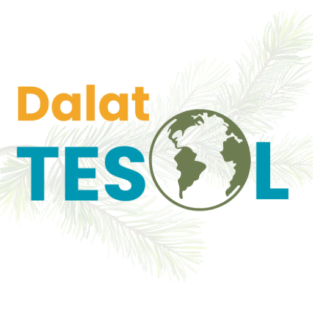By Dalat TESOL
Helping novice researchers build clarity, rigor, and purpose in their research journey
🌄 Standing on the Shoulders of Giants
When you visit Google Scholar, you’ll see its quiet motto:
“Stand on the shoulders of giants.”
This phrase—originally attributed to Isaac Newton—reminds us that all research is built on prior knowledge. Whether you’re investigating AI in writing instruction or exploring teacher beliefs in EFL classrooms, your work adds a small, meaningful brick to the wall of collective knowledge.
But what makes a piece of work “research” in the first place? And what separates high-quality research from everyday opinion or classroom innovation?
Let’s break it down.
🔍 What Is Research?
Research is a systematic, evidence-based process of answering questions through the collection and analysis of data. It is not just reporting what you already know—it is discovering what is not yet fully known.
In applied linguistics, research often addresses language learning, teaching, use, and policy—through empirical evidence, theoretical grounding, and critical reflection.
🧭 Four Essential Characteristics of Good Research
Let’s explore the key features of high-quality research, especially for those beginning their academic journey.
1. 🎯 Research Addresses Gaps and Is Justified
Good research starts with a clear purpose: to solve a problem, address a gap, or build on existing work. You don’t do research just because a topic is “interesting.” You do it because something is missing, under-explored, or not well understood in the current literature.
Google Scholar becomes your entry point to locate those “gaps.” By reading recent articles in your area, you start to see what’s been done and what hasn’t.
✅ A good research question is:
- Grounded in literature (you’ve read what’s come before)
- Specific and feasible
- Justified by pointing out a gap, a contradiction, or a new need
Example:
“While many studies have explored writing self-efficacy in English learners, few have investigated how students develop this confidence in AI-assisted environments.”
2. 🧪 Research Uses Valid and Reliable Tools
Once you know what to study, the next question is how.
Strong research uses tools (instruments) and procedures that are valid (they measure what they’re supposed to) and reliable (they produce stable, consistent results).
Examples of instruments:
- A well-constructed questionnaire
- A classroom observation protocol
- A discourse coding scheme
- An interview guide
If your tool is borrowed from previous research, explain why it’s appropriate. If you created your own, justify it and test it for reliability (e.g., Cronbach’s alpha, interrater reliability).
Example:
“The interview questions were adapted from Ulla & Teng (2024) and piloted with three graduate students. Feedback led to clearer wording and improved flow.”
3. 🔬 Research Is Rigorous, Transparent, and Replicable
This is what separates research from anecdote or classroom experimentation.
Your study must follow a systematic design—with clear procedures, transparent reporting, and logical reasoning. A fellow researcher reading your work should be able to:
- Understand exactly how you collected and analyzed your data
- Judge whether your interpretations are supported
- Potentially replicate your study with a similar population
Transparency means:
- Reporting your data collection steps (sampling, consent, instruments)
- Explaining your coding or scoring
- Disclosing limitations honestly
Example:
“Interviews were transcribed and coded thematically following Braun and Clarke’s (2006) six-step method. Coding decisions were documented in a shared spreadsheet to enhance consistency.”
4. ⚖️ Research Must Be Ethical
Ethics is not optional—it is fundamental.
You must protect your participants’ rights and handle data responsibly. This means:
- Getting informed consent
- Keeping data anonymous or confidential
- Avoiding harm (psychological, academic, reputational)
- Being honest in reporting results (no data manipulation)
Even in non-invasive studies like text analysis or corpus studies, ethical reflection is still important—especially if student writing or classroom work is involved.
Example:
“Participants were informed that their AI-generated essays would be anonymized and used for research purposes only. All names were removed before analysis.”
📌 Final Thoughts: Research as Contribution, Not Perfection
New researchers often feel intimidated, thinking research must be perfect, complex, or groundbreaking. In reality, good research is not about perfection—it’s about contribution.
Your study might be small. But if it’s:
- Grounded in existing knowledge,
- Carefully and ethically designed,
- And reported clearly and honestly—
Then it matters.
Like the giants before us, you’re adding one more step in the collective climb toward better understanding language, learning, and teaching.
